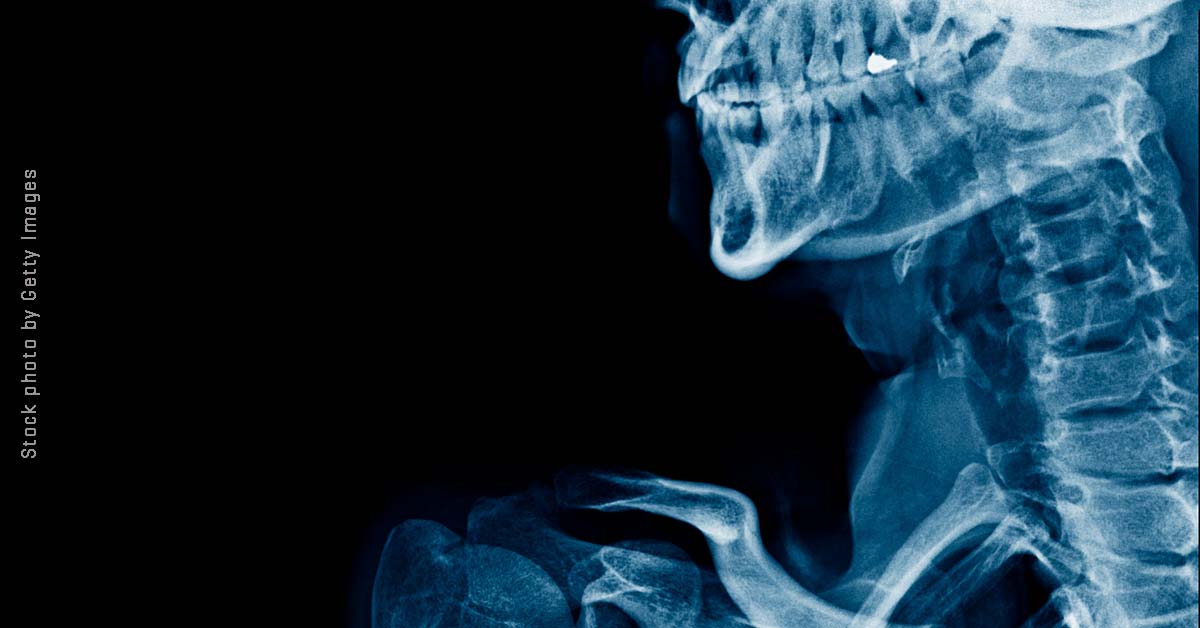
Who’s at risk and how many?
Atrial fibrillation, kidney toxicity and atypical femur (thighbone) fractures have also been associated with BMA use, but osteonecrosis of the jaw seems to be the side effect that worries breast cancer patients the most.
“I am soooo scared of developing ONJ,” tweeted one during a discussion of side effects.
But what are the actual odds of contracting it? A recent SWOG study, co-led by Gralow, looked at data from nearly 3,500 cancer patients treated with IV bisphosphonate or denosumab for their metastatic bone disease. Ninety cases of ONJ were confirmed. The estimated cumulative incidence, or risk of ONJ at three years was 2.8%. Rates were .08% at year one and 2% at year two. Over three years, the team found:
- Patients with myeloma had the highest rates: 4.3%
- Patients with more exposure to zoledronic acid had higher rates: 3.2%
- Patients with breast cancer had the lowest rates: 2.4%
- Patients with poor dental health had higher rates, e.g., fewer teeth: 4.4%; dentures: 5.0%; prior oral surgery: 3.8%
- Current smokers had higher ONJ rates: 3.7%
The results pointed to the importance of optimizing oral health before initiating BMAs and slowing the dosing from monthly to quarterly.
A related study, also led by Gralow, looked at risk factors for bisphosphonate-related ONJ, or BRONJ, in early-stage breast cancer patients. They studied three BMAs, measuring time to onset, determining ONJ drivers, and incorporating BRONJ prevention guidelines, with patients completing dental procedures before BMA use; undergoing regular dental exams; using good oral hygiene, etc.
After nearly eight years of follow-up, 48 out of 6,018 women developed ONJ. That’s just 0.8%.
Participants developed ONJ with all three BMAs, but zoledronic acid use and poor dental health increased the risk, especially when combined. Median duration to onset was 2.3 years. ONJ was considered spontaneous or “unprovoked” in 20 lesions and “provoked” by dental extraction in 20; periodontal disease in 14; denture trauma in six; and other dental surgery in two. ONJ was more than twice as likely to show up on the lower jaw than the upper. People who developed spontaneous, or unprovoked, ONJ tended to heal faster.
Prevention and education key
BRONJ prevention should be “implemented widely,” the authors concluded. Further studies are also needed, they said, to design protocols to train and support medical and dental providers in preventing the condition.
Johnston, who is connected with others living with ONJ via several large private Facebook groups, agreed there’s a huge need for education on the condition — and not just among patients.
“Eighty to 90% of the people in my group get bad treatment from a dentist,” she said. “They get root canals — the dentists do it with the best of intentions — but it causes so much trauma to the jaw. They don’t understand you need to do the least possible.”
And ONJ is hardly restricted to cancer patients, she said.
“There are many people with osteoporosis in the ONJ groups,” she said. “Or they were prescribed for osteopenia. I’ve heard horror stories. Prolonged exposed to bisphosphonates is not a good idea.”
In 2012, the Food and Drug Administration cautioned patients with osteoporosis against long-term use of zoledronic acid (aka Reclast), alendronate (Fosamax) and ibandronate (Boniva), publishing an analysis prompted by reports of adverse effects. In 2018, they provided an additional safety update regarding atypical femur fractures.
Following the science
Manohar said guidelines at SCCA have shifted to reflect the most recent studies.
“We used to give Zometa monthly but we’ve transitioned to every three months,” she said. “It’s just as good in preventing skeletal-related effects like fractures.”
What advice does she give for breast cancer patients contemplating their use?
“You have to weigh the risk of potential complications in the oral area versus complications from the cancer,” she said. “Fractures (due to metastatic bone disease) can be pretty debilitating as well.”
And the drugs can also be pricey, she said, another potentially toxic side effect.
“Zometa is not as expensive,” she said. “Maybe $170 with its administration but denosumab is $2,000 a dose. That’s a staggering difference.”
A researcher with the Hutchinson Institute for Cancer Outcomes Research, or HICOR, Manohar is currently investigating BMA use among Washington state cancer patients and studying whether de-escalating might be a way to provide more value and do less harm. A recent analysis showed doing so could save patients and payers millions of dollars.
“That’s a piece of this,” she said. “Can we de-escalate the treatment but still get the same outcome and positively impact the patient experience? They could come in less often for infusions and potentially have fewer side effects.”
As for expanding the use of these agents to patients with DCIS, she said it’s compelling research but requires further study.
“It’s definitely adds to the literature,” she said. “We do want to prevent breast cancer and anti-hormone therapy is not optimal for everyone because of the side effects. But is putting patients with DCIS on bisphosphonates going to lead to problems later on? It’s worth exploring, but with these side effects, the big question is: What’s the dose and how long do we give it?”
"breast" - Google News
May 05, 2021 at 03:08AM
https://ift.tt/33eEQ8n
Risk vs. benefit: Bisphosphonates in breast cancer - Fred Hutch News Service - Fred Hutch News Service
"breast" - Google News
https://ift.tt/2ImtPYC
https://ift.tt/2Wle22m
Bagikan Berita Ini















0 Response to "Risk vs. benefit: Bisphosphonates in breast cancer - Fred Hutch News Service - Fred Hutch News Service"
Post a Comment